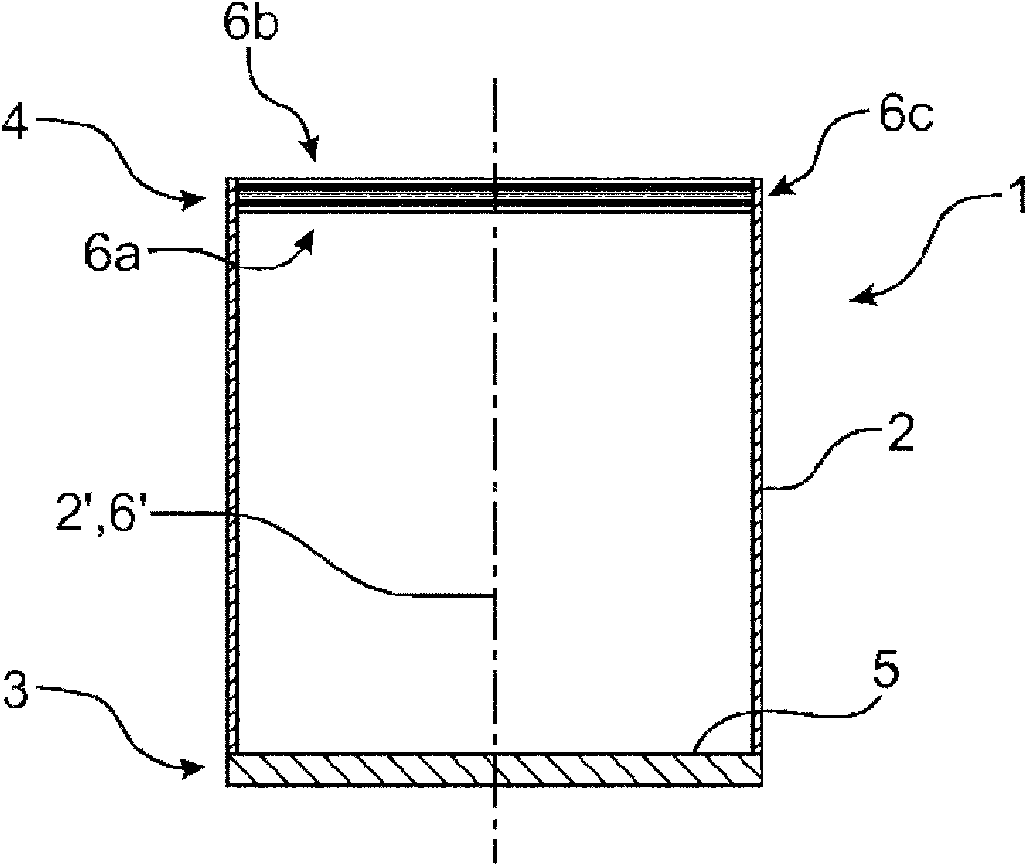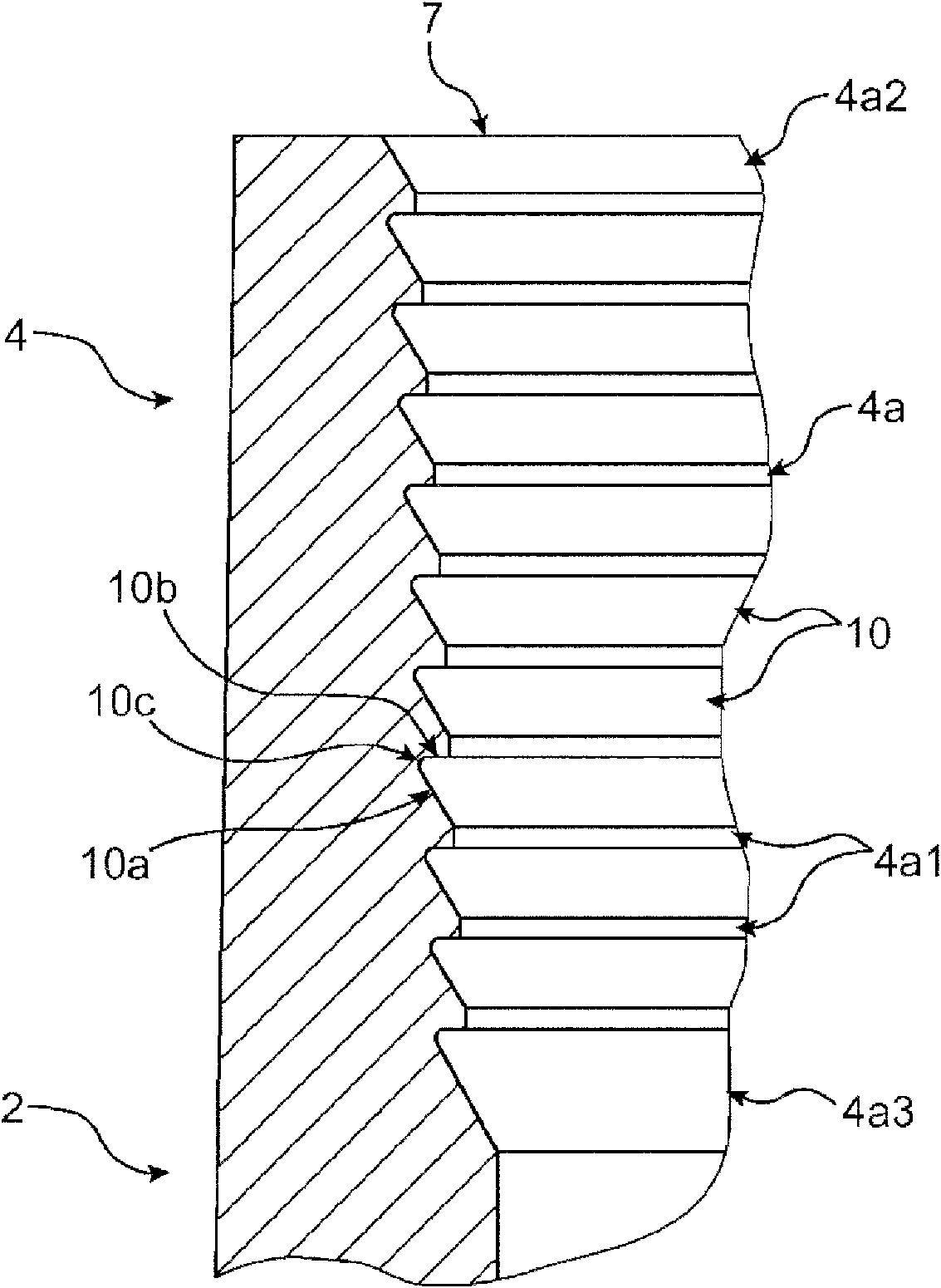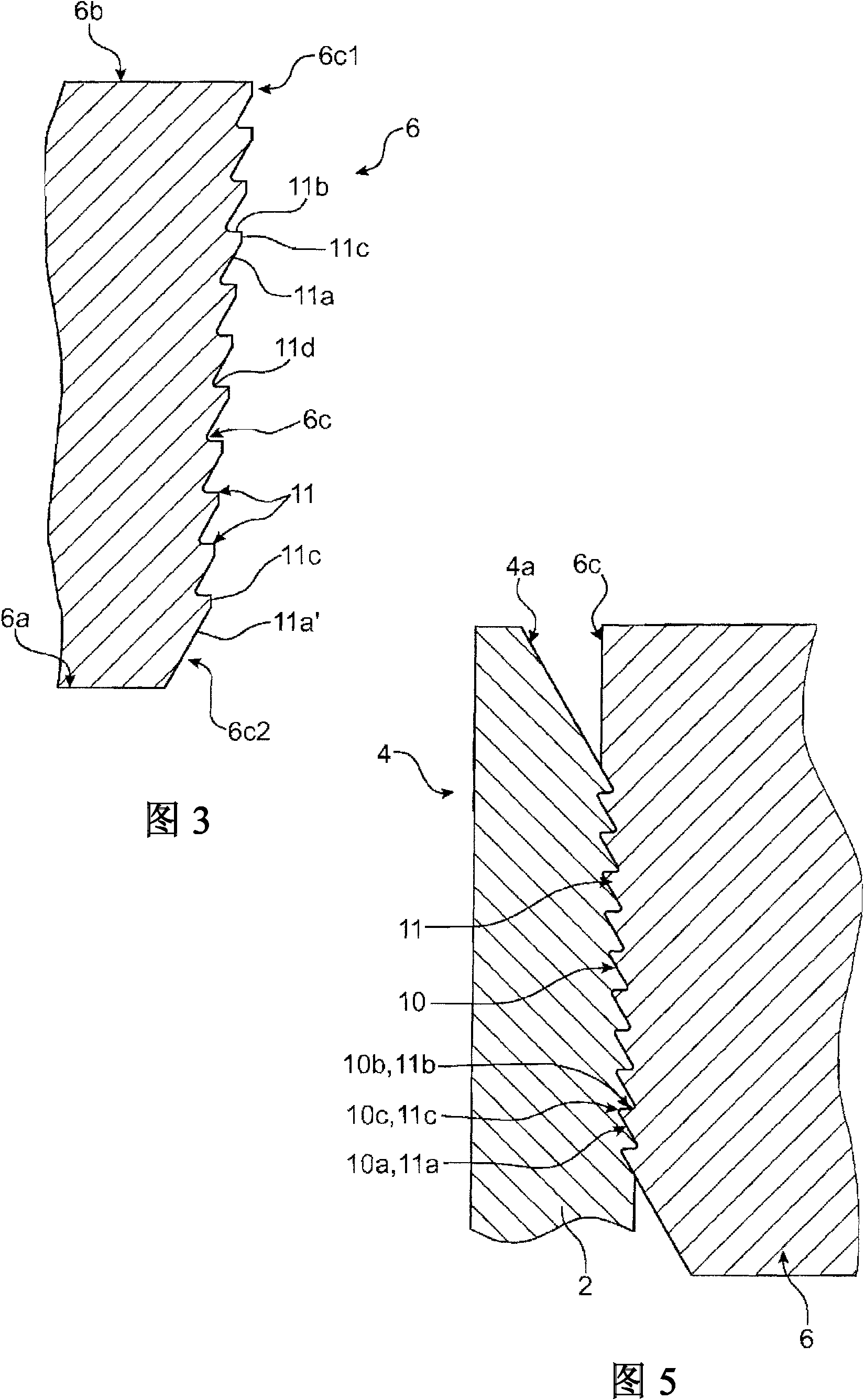Container for packaging nuclear waste with force-fitted lid
A container and solid waste technology, applied in the direction of portable protective containers, caps, pressure vessels, etc., can solve the problems of deterioration, damage, and impact on long-term storage safety, and achieve the effect of ensuring safety
- Summary
- Abstract
- Description
- Claims
- Application Information
AI Technical Summary
Problems solved by technology
Method used
Image
Examples
Embodiment Construction
[0036] figure 1 The illustrated container 1 is particularly suitable for waste materials which tend to increase or recover in volume over time. The container 1 is also particularly suitable for enclosing stacked compressed blocks of radioactive waste. Such as figure 1 As shown, the container 1 is generally in the shape of a cylindrical barrel. It comprises a cylindrical side wall 2 having two end edges, an upper end edge 3 and a lower end edge 4, each of which has a circular closing member 5 and 6, the lower closing member forming the bottom member, the upper The closure member forms a lid. Here, the bottom member 5 is fixed non-removably to the side wall 2, for example by welding or crimping. The cover member 6 is a built-in type. The cover member comprises two surfaces: an inner surface 6a and an outer surface 6b, connected by a peripheral profile 6c. The lid 6 closes the upper opening 7 ( figure 2 or visible in FIG. 4 ); as explained later, through this upper openin...
PUM
 Login to View More
Login to View More Abstract
Description
Claims
Application Information
 Login to View More
Login to View More - R&D
- Intellectual Property
- Life Sciences
- Materials
- Tech Scout
- Unparalleled Data Quality
- Higher Quality Content
- 60% Fewer Hallucinations
Browse by: Latest US Patents, China's latest patents, Technical Efficacy Thesaurus, Application Domain, Technology Topic, Popular Technical Reports.
© 2025 PatSnap. All rights reserved.Legal|Privacy policy|Modern Slavery Act Transparency Statement|Sitemap|About US| Contact US: help@patsnap.com



